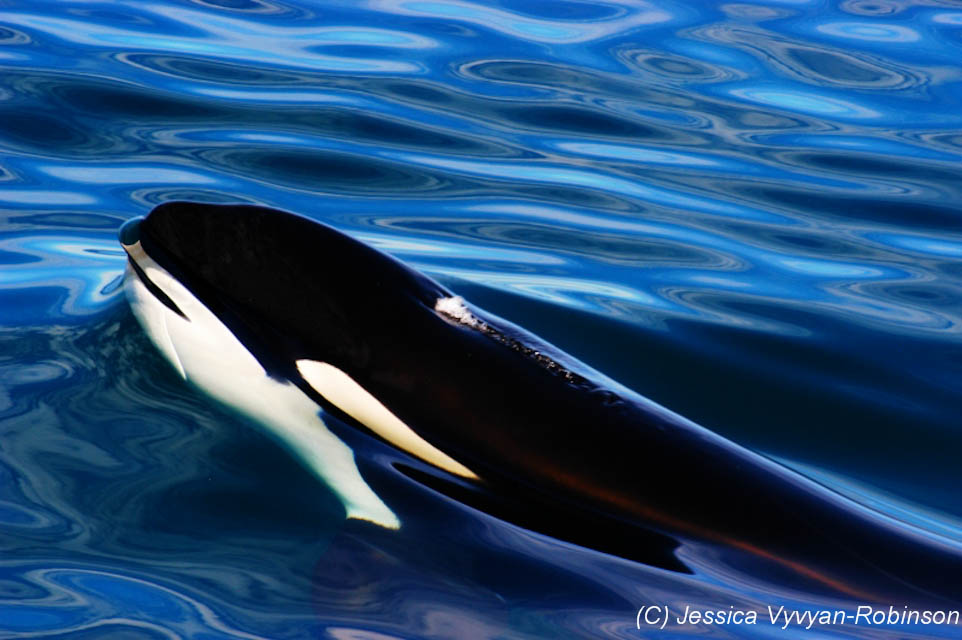Last Friday, spectators onboard a whale-watching vessel in Canada’s Strait of Georgia witnessed the homecoming of the world’s oldest known orca. Affectionately known as Granny, the whale is estimated by the Center for Whale Research to have been born in 1911, making her a staggering 103 years old. Granny is the matriarch of the J-pod, one of three pods that make up the southern resident group of orcas that reside predominantly in Puget Sound, the Strait of Georgia and San Juan de Fuca during the summer, and head into open ocean during the winter. When she was spotted last week she was leading her family home, having been most recently sighted prior to that off the coast of California eight days previously. The distance between California and the Strait of Georgia is approximately 800 miles, and the fact that Granny seemed to have completed the journey with ease proves that although she’s a great-great grandmother she is still just as fit and healthy as the other whales in her pod.
Granny’s reappearance in her Canadian home waters is eagerly anticipated each year by the researchers that have been documenting the lives of her family since 1970, making them the most studied group of orcas in the world. She was identified last Friday by Captain Simon Pidcock of Ocean EcoVentures, who recognized her immediately thanks to a distinctive half-moon shaped notch on the edge of her dorsal fin. Just as Granny’s lifetime has seen countless human tragedies including the sinking of the Titanic and two World Wars, she had to survive through her own period of fear and unrest. In the 60s and 70s the capture of wild orcas from the waters of Puget Sound for sale into captivity was a common occurrence, and although the practice of taking orcas from the wild has since stopped, Granny’s family did not escape unscathed from those years of persecution. Although Granny herself managed to avoid capture, her relative Lolita was taken from Puget Sound in 1970 and sold into captivity. Seventeen years later, Lolita was the only survivor of approximately 58 whales captured around the same time. She still resides in Miami Seaquarium, in a concrete pen only 35 feet wide.
The comparisons between captive orcas like Lolita and wild ones like Granny underline once and for all why a life in captivity is not a humane option for animals as sociable and intelligent as these whales. Unlike Lolita, Granny does not have to perform tricks for a living; instead, her role is the passing down of knowledge to her extensive family. Granny spends all her time with 25 of her family members, while Lolita has lived alone for over 30 years – while Lolita’s every movement is restricted, Granny can travel hundreds of miles every day. Perhaps the most obvious comparison is in the life expectancy between captive and wild orcas. Although SeaWorld maintains that the lifespan of orcas kept by the entertainment industry is comparable to those in the wild, the evidence strongly suggests that this is not the case. While the average life expectancy for male orcas in the wild is between 40 and 60 years, and for females between 60 and 80 years, more than 60% of the orcas that have died in captivity were younger than ten years old according to the Center for Whale Research.
Granny’s incredible age serves as a testament to how long orcas can survive in the wild, and should not necessarily be regarded as an anomaly. Other whales from the southern resident group have reached equally impressive birthdays, including one individual that died in 2008 aged 98, and another female that is currently believed to be 87 years old. Ultimately, Granny’s reappearance last week should trigger bittersweet emotions- joy at the full and enriched life that she has led in the wild, and sadness at the plight of captive orcas, whose reduced years continue to be defined by boredom, humiliation, trauma and loneliness.







